Excerpts from Jim Conrad's
Naturalist Newsletter
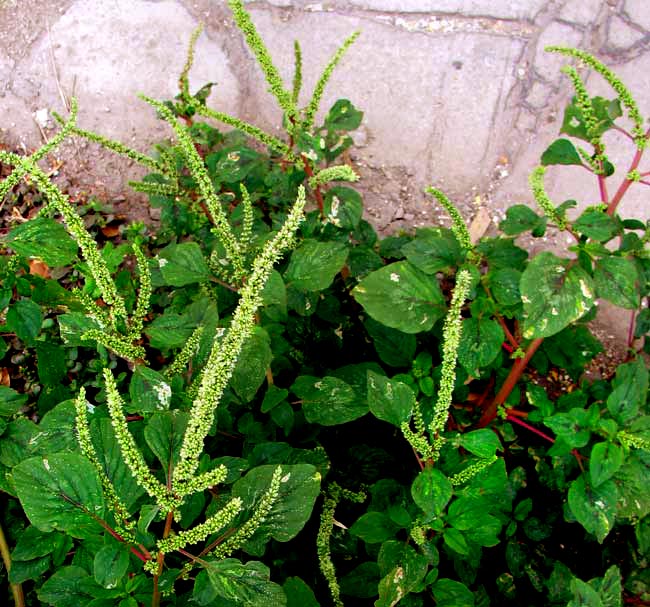
from the April 18, 2010 Newsletter issued from Hacienda Chichen Resort beside Chichén Itzá Ruins, central Yucatán, MÉXICO; limestone bedrock, elevation ~39m (~128ft), ~N20.676°, ~W88.569°
SPINY AMARANTH
Not all of Mérida's street plants were noteworthy ornamentals. Flowering nowadays at the bases of streetlights, along breaking-up sidewalk edges and in low, moist parts of abandoned lots is the plant shown above.
That's the knee-high Spiny Amaranth, AMARANTHUS SPINOSUS, and the very second I saw it a poignant memory flashed through my mind, one from Kentucky farmboy days, of me going out to the pond to fish for catfish, carrying a tin can with a few earthworms in it for bait, barefooted, trying hard to not step on a Spiny Amaranth because its spines HURT!
In the picture you might guess that those pale green, slender items are spikelike flower heads, or inflorescences. Those long inflorescences bear only male flowers. Each male flower consists of five 1/8th- inch long (2 mm) scale-like "tepals" and five stamens. You can some male flowers, with most of the baglike, pollen-producing anthers having fallen off their white, bristly filaments, below:
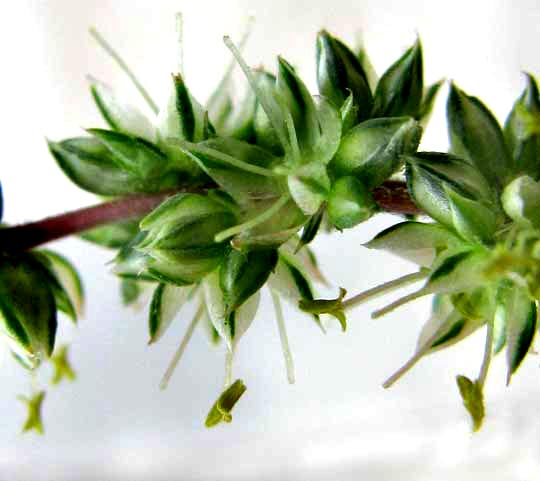
Spiny Amaranth's female flowers similarly bear five tepals, but instead of stamens have three spreading stigmas atop an ovary, which eventually matures into an egg-shaped fruit-type known as a utricle. Utricles are bladdery, one-seeded fruits not splitting open at maturity. Female flowers occur in more or less spherical little bunches in the leaf axils -- where the leaves' petioles attach to the stem -- as shown below:
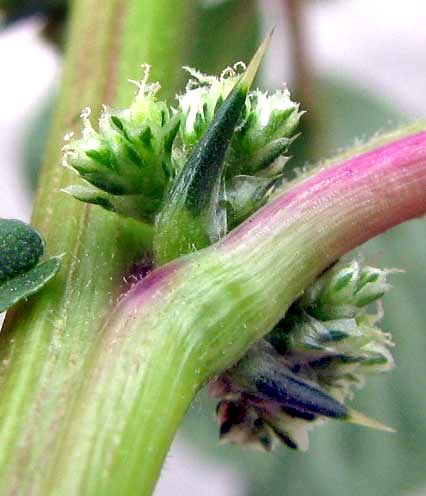
In that picture you also see where the plant puts its spines -- exactly where they're needed, pointed in exactly the right direction, to deter probing herbivore lips. They're only about half an inch long (15 mm) but sure can make a farmboy jump when they're stepped on just right. In that last picture, toward the top, you can also see fuzzy stigmas atop the ovaries filtering the air for pollen.
Spiny Amaranth is native to tropical America's humid lowlands but now is established as a weed in the tropics worldwide -- it's "pantropical." And as I could already tell you back in Kentucky during the early 1950s, it also occurred well beyond the tropics. On our farm it was limited to the barnyard, where the richest, most trampled-on soil was.
entry dated March 1, 2022, issued from near Tequisquiapan, elevation about 1,900m (6200 ft), Querétaro state, MÉXICO
SPINY AMARANTH UPROOTED
During the heart of the dry season with the landscape all gray-brown, at the edge of a fallow, semi-abandoned field, someone had walked away from the trail just to pull up the plant shown below:
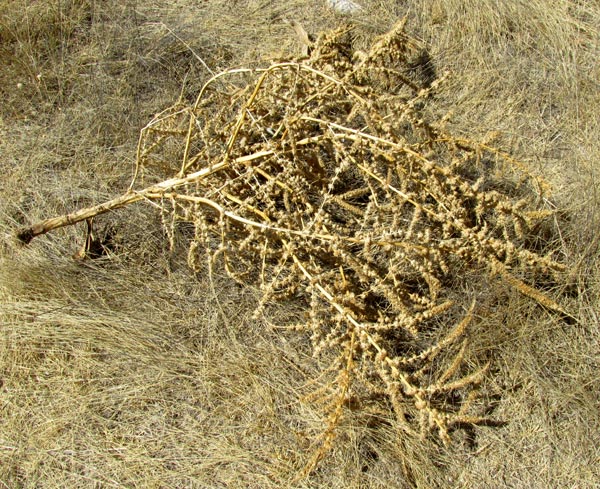
It was easy to identify because of its spiny fruiting heads, shown below:
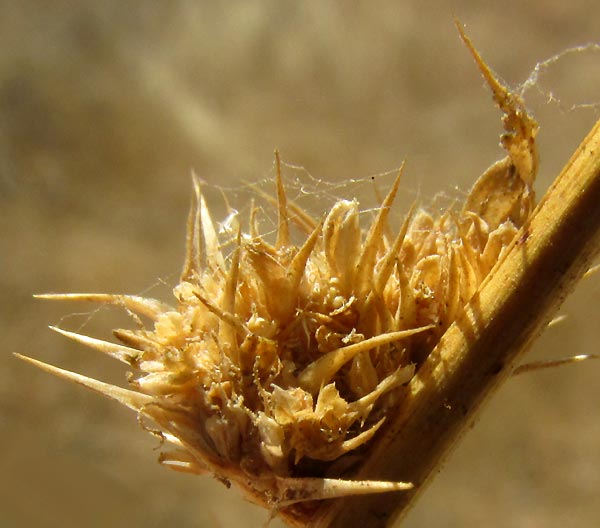
I'm not surprised to find Spiny Amaranth here because it's one of the most common and widely distributed weeds in tropical America. Members of the Amaranth Family have C4 photosynthesis, as opposed to the C3 photosynthesis of most temperate zone plants. In hot, arid areas, C4 plants photosynthesize more efficiently than C3 plants, which in the temperate zone it's the other way around. Still, in this area Spiny Amaranth seldom is seen. Maybe it's because the shepherds who daily drive their livestock here and there across the landscape make a special effort to pull them up when they see them.